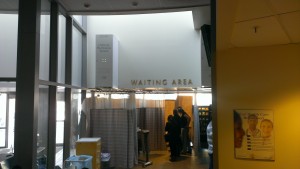 Myth survives as common knowledge. Healthcare sages propagate emergency department (ED) efficiency myths like:
Myth survives as common knowledge. Healthcare sages propagate emergency department (ED) efficiency myths like:
“If the ED only saw ‘true-emergencies’, ED crowding and costs would improve.”
“Many patients don’t need to be in the ED. We would save money by sending them somewhere else.”
The myth of High-Acuity, ‘true-emergency’ EDs assumes:
1. It’s possible to educate patients to go elsewhere.
2. Patients have somewhere else to get care.
3. Staff can safely tell who is a ‘true-emergency’ and send all others elsewhere.
4. Low-acuity patients crowd the ED and shouldn’t be there.
5. We can save money by decreasing low acuity ED visits.
Myth Busting
1. Patients attend the ED for access, not because they are stupid. Most patients don’t need education.
2. Patients come to harm if sent elsewhere. (JAMA)
3. Low-acuity patients do NOT crowd the ED. They cycle through quickly. Sick, admitted patients crowd the ED.
4. Marginal costs for minor patient complaints are minuscule: pennies compared to the cost of keeping the ED open.
High Acuity
‘True-emergencies’ don’t trickle in one at a time.
‘True-emergencies’ often present in batches. In larger EDs, three critically ill patients often present at the same time, and most providers can recall a time when 4 critically ill patients showed up within minutes. Each critically ill patient requires up to 4 nurses, a physician, a respiratory technician, and more.
ED Efficiency Killer
Why do governments close low-volume EDs even if they have money to keep them open?
Small EDs often have many hours when they see very few patients. An acute care resource running at anything less than full capacity wastes money. Idleness equals waste; it kills efficiency.
ED Efficiency Solution
Consider a trauma room. Most hospitals keep one or more operating rooms open (staffed), at great cost, to manage trauma or emergency surgery. Idle trauma rooms are expensive. Hospitals can recover some cost by managing non-emergent cases, especially if the team has already been called in and a suitable admitted patient awaits surgery.
Eliminate idleness to increase ED efficiency.
Hospitals recover cost and gain efficiency by using the trauma room for less urgent, non-trauma patients!
Even IF there was a way to figure out which patients were ‘true emergencies’, EDs large enough to manage all the ‘true emergencies’ in a community would stand idle much of the time at HUGE cost.
EDs recover cost and gain efficiency by seeing less-acute patients.
Mythical ‘High Acuity’ EDs never match the efficiency of a high volume ED.
How do you approach efficiency in your ED? How would you deal with ED idleness if you could identify and safely send away all the non-true-emergencies?


